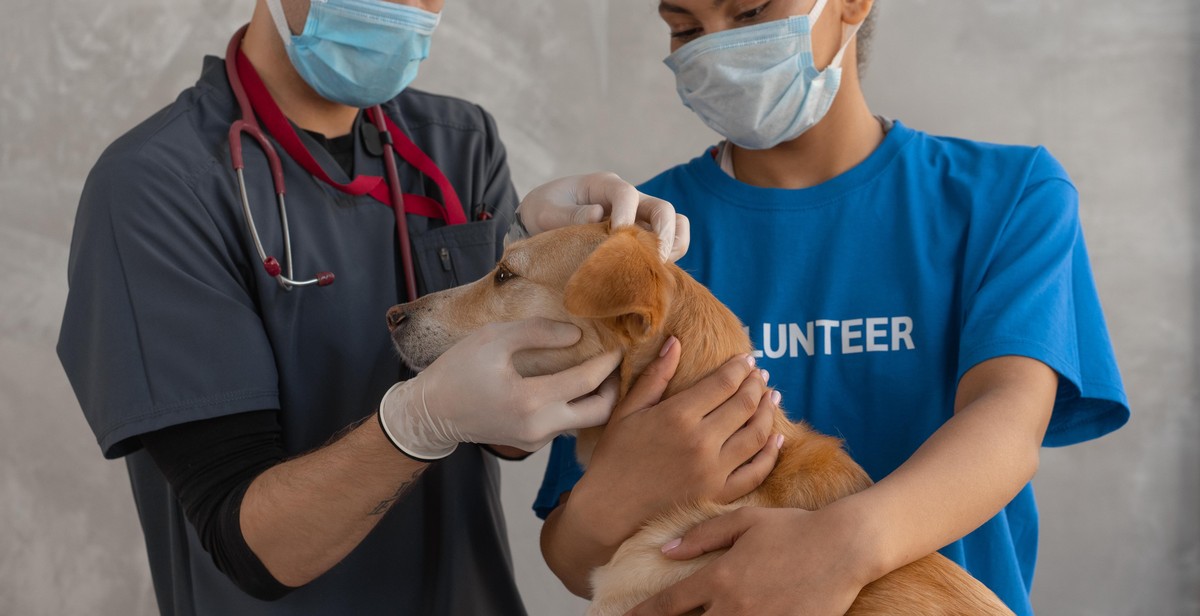How to Perform Basic First Aid for Pets: Handling Common Pet Emergencies
Pets are a part of our family, and as pet owners, it is our responsibility to ensure their safety and well-being. However, no matter how cautious we are, accidents can happen, and pets can get injured or fall ill. This is where basic first aid knowledge for pets comes into play. Knowing what to do in a pet emergency can make all the difference in saving your furry friend’s life.
Why Basic First Aid for Pets is Important
Basic first aid for pets is crucial because it can help stabilize the pet’s condition before professional help arrives. It can also prevent the situation from worsening and can sometimes even save the pet’s life. As a pet owner, it is essential to have a basic understanding of pet first aid to ensure that you can provide your pet with the necessary care in an emergency.
What to Do in a Pet Emergency
In a pet emergency, the first step is to stay calm and assess the situation. It is essential to keep your pet calm and still to prevent further injury. Depending on the situation, you may need to administer basic first aid such as stopping bleeding, performing CPR, or stabilizing fractures.
How to Perform Basic First Aid for Pets
Performing basic first aid for pets involves knowing how to handle common pet emergencies such as choking, poisoning, heatstroke, and more. It is essential to understand the signs and symptoms of these emergencies and how to administer first aid to stabilize the pet’s condition.
When to Seek Professional Help
While basic first aid can help stabilize the pet’s condition, it is crucial to seek professional help as soon as possible. If your pet’s condition is severe or life-threatening, take them to the nearest veterinary hospital immediately.
Being prepared and knowing what to do in a pet emergency can make all the difference in saving your pet’s life. By learning how to perform basic first aid for pets, you can ensure that your furry friend receives the necessary care in an emergency situation.

Why Basic First Aid for Pets is Important
As a pet owner, it is essential to know basic first aid for pets. Just like humans, pets can get into accidents or fall ill, and it is crucial to know how to handle common pet emergencies. Basic first aid for pets can help:
- Prevent Further Injury
- Reduce Pain and Suffering
- Save Your Pet’s Life
Prevent Further Injury
When your pet is injured, it is crucial to prevent further injury. Basic first aid for pets can help you stabilize your pet’s condition before taking them to the vet. For instance, if your pet has a broken bone, it is essential to immobilize the affected area to prevent further damage. By knowing basic first aid for pets, you can prevent your pet’s condition from worsening, which can save you time, money, and your pet’s life.
Reduce Pain and Suffering
Pets can experience pain and suffering just like humans. Basic first aid for pets can help reduce your pet’s pain and suffering before they receive professional medical attention. For example, if your pet is experiencing heatstroke, you can cool them down by wetting their fur and giving them water. By reducing your pet’s pain and suffering, you can improve their chances of recovery and make them more comfortable in the process.
Save Your Pet’s Life
In some cases, basic first aid for pets can be the difference between life and death. For example, if your pet is choking, knowing how to perform the Heimlich maneuver can save their life. Similarly, if your pet is bleeding profusely, applying direct pressure to the wound can help stop the bleeding before they receive professional medical attention. By knowing basic first aid for pets, you can improve your pet’s chances of survival in an emergency.
Overall, basic first aid for pets is essential for every pet owner. It can help prevent further injury, reduce pain and suffering, and save your pet’s life. By taking the time to learn basic first aid for pets, you can be better prepared to handle common pet emergencies and ensure your pet receives the care they need when they need it most.

What to Do in a Pet Emergency
Even with the best care, pets can still experience emergencies. Knowing what to do in a pet emergency can mean the difference between life and death for your furry friend. Here are the steps to follow:
Stay Calm
It’s natural to feel panicked when your pet is in distress, but it’s important to stay calm. Your pet can sense your emotions, and if you’re upset, it can make the situation worse. Take a deep breath, and try to stay focused on what needs to be done.
Assess the Situation
The first step in any pet emergency is to assess the situation. Is your pet conscious? Are they breathing? Do they have any visible injuries? If your pet is unconscious or not breathing, you will need to perform CPR. If your pet has a visible injury, you will need to take steps to stop the bleeding and prevent infection.
Contact Your Veterinarian or Emergency Clinic
The next step is to contact your veterinarian or an emergency clinic. They will be able to advise you on what to do next. If your pet needs urgent care, they will tell you to bring them in immediately. If your pet is stable, they may advise you to monitor them at home or bring them in during regular hours.
When you contact your veterinarian or emergency clinic, make sure you have the following information ready:
- Your pet’s name and breed
- Their age and weight
- Their symptoms
- Any medications they are taking
- Any allergies they have
It’s also a good idea to have your veterinarian’s phone number and address saved in your phone or written down somewhere easily accessible.
Conclusion
In a pet emergency, it’s important to stay calm, assess the situation, and contact your veterinarian or an emergency clinic. By following these steps, you can help ensure the best possible outcome for your furry friend.

How to Perform Basic First Aid for Pets: Handling Common Pet Emergencies
As a pet owner, it is important to know how to perform basic first aid for your pet, especially in times of emergency. Being able to act quickly and confidently can make all the difference in saving your pet’s life. Here are some basic first aid tips for handling common pet emergencies:
Bleeding
If your pet is bleeding, the first step is to apply pressure to the wound. Use a clean cloth or gauze to apply firm pressure to the area. If the bleeding is severe, elevate the affected limb or apply a tourniquet above the wound. Seek veterinary attention immediately.
Choking
If your pet is choking, check their mouth for any obstructions. If you can see the object, try to remove it with your fingers or a pair of tweezers. If the object is not visible or cannot be removed, perform the Heimlich maneuver by placing your hands behind your pet’s ribs and squeezing firmly. Seek veterinary attention immediately.
Poisoning
If you suspect your pet has ingested a toxic substance, seek veterinary attention immediately. Do not induce vomiting unless instructed to do so by a veterinarian. Bring a sample of the substance your pet ingested to the vet to help with diagnosis and treatment.
Burns and Scalds
If your pet has been burned or scalded, immediately flush the affected area with cool water for at least 10 minutes. Do not apply ice or any ointments to the area. Seek veterinary attention immediately.
Fractures and Dislocations
If you suspect your pet has a fracture or dislocation, try to immobilize the affected limb with a splint or bandage. Do not attempt to reset the bone yourself. Seek veterinary attention immediately.
Heatstroke and Hypothermia
If your pet is experiencing heatstroke, move them to a cool, shaded area and apply cool water or ice packs to their head, neck, and chest. If your pet is experiencing hypothermia, move them to a warm area and wrap them in blankets. Seek veterinary attention immediately.
Remember, these are just basic first aid tips for handling common pet emergencies. If you are unsure of what to do or your pet’s condition worsens, seek veterinary attention immediately.

When to Seek Professional Help
While knowing how to perform basic first aid for your pet is important, there are certain situations where you should seek professional help immediately. These include:
- Unconsciousness or Collapse: If your pet is not responsive or has lost consciousness, seek veterinary help immediately.
- Seizures: If your pet is having a seizure, do not try to restrain them. Instead, keep them away from any dangerous objects and seek veterinary help immediately.
- Breathing Difficulties: If your pet is having trouble breathing, seek veterinary help immediately. This can be a life-threatening emergency.
- Severe Bleeding: If your pet is bleeding heavily, apply pressure to the wound and seek veterinary help immediately.
- Ingestion of Toxins: If your pet has ingested something toxic, such as chocolate or medication, seek veterinary help immediately. Do not induce vomiting unless instructed to do so by a veterinarian.
- Eye Injuries: If your pet has an eye injury, do not attempt to treat it yourself. Seek veterinary help immediately.
- Severe Burns or Scalds: If your pet has severe burns or scalds, seek veterinary help immediately.
- Head Injuries: If your pet has a head injury, seek veterinary help immediately. This can be a serious and potentially life-threatening emergency.
Remember, it is always better to be safe than sorry when it comes to your pet’s health. If you are ever unsure about what to do in an emergency situation, seek professional help immediately.
